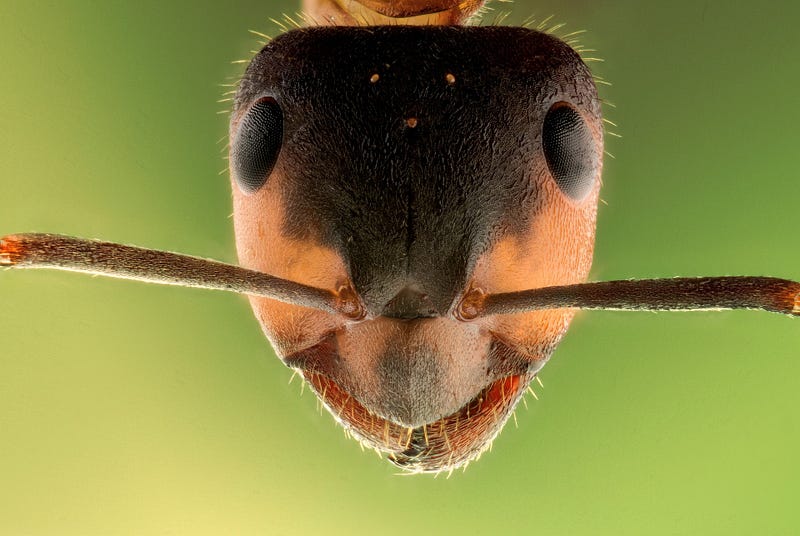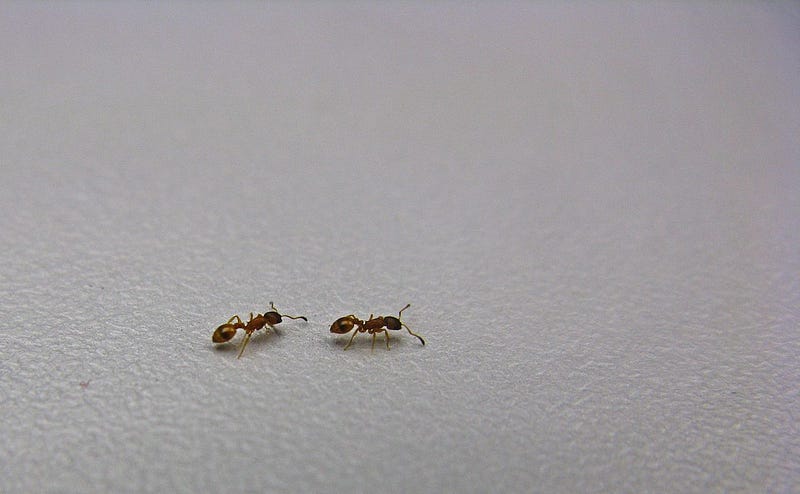Revolutionary Insights into Ant Communication and Robot Mimicry
Written on
Chapter 1: The Mystery of Ant Communication
Researchers at the University of Bristol embarked on an intriguing project to uncover how ants relay information within their colonies. To investigate this, they developed a small robot capable of mimicking the behaviors of ants. Their findings shed light on new aspects of ant communication.

Ants are often viewed as remarkably intelligent insects. However, their true intelligence is derived from the collective behavior of the entire colony, which acts as a cooperative entity. These industrious workers depend on each other for guidance; without their peers, they would struggle to function. Each ant communicates its observations to others, including the location of new nests.
Section 1.1: Tandem Running and Information Transfer
A team of UK researchers aimed to decipher the mechanisms behind this information transfer. They designed a tiny robot to guide ants from the species Temnothorax albipennis. The study focused on a behavior known as “tandem running,” where one ant leads another to a discovered food source or potential nesting site. This behavior was detailed in the Journal of Experimental Biology.
Subsection 1.1.1: The Significance of Tandem Running
The tandem running phenomenon allows an ant to lead another to resources, demonstrating the importance of learning in both human and insect lives. Professor Nigel Franks, a leading animal behaviorist at the University of Bristol, stated, “Our aim was to explore the mechanisms responsible for the transfer of navigational knowledge among insects.”

The experiment took place in a specially constructed arena featuring both an old and a new ant nest. A gantry overhead held the robot, which was designed to mimic the scent of a real ant.
Section 1.2: The Experimental Setup
To test the robot's ability to perform tandem running, the researchers positioned it directly in front of an ant exiting its nest. The robot, programmed to guide the ant to a new nest, presented two potential routes: a direct path and a more convoluted one. The robot paused periodically, allowing the ant to familiarize itself with the surroundings.
Chapter 2: The Results of the Experiment
The first video, "Swarm Robotics: Invasion of the Robot Ants," delves into the fascinating intersection of robotics and ant behavior, showcasing how technology can mimic nature.
The researchers observed that when an ant reached the new nest, it was allowed to explore before its journey back began. They utilized a tracking device to monitor the ant's return to its original nest.
The results were noteworthy; the ants were able to successfully navigate back to their old nest, regardless of the complexity of the route they had taken.
The second video, "Swarm Intelligence | Scientific Controversies," discusses the implications of teaching and learning in social insects, providing further context to the research findings.
The study highlighted that ants who had received guidance from the robot were more efficient in their navigation compared to those who had to find their way independently. This indicates that the principles of teaching in ants are well understood and can be replicated by machines.
Source: Journal of Experimental Biology
Conclusion: The Intersection of Nature and Technology
Understanding ant communication not only enhances our knowledge of these fascinating insects but also demonstrates the potential for robotics to imitate natural behaviors. If you found this article engaging, please leave a comment or some claps to encourage further exploration of these captivating topics. Follow me for daily updates on new articles!